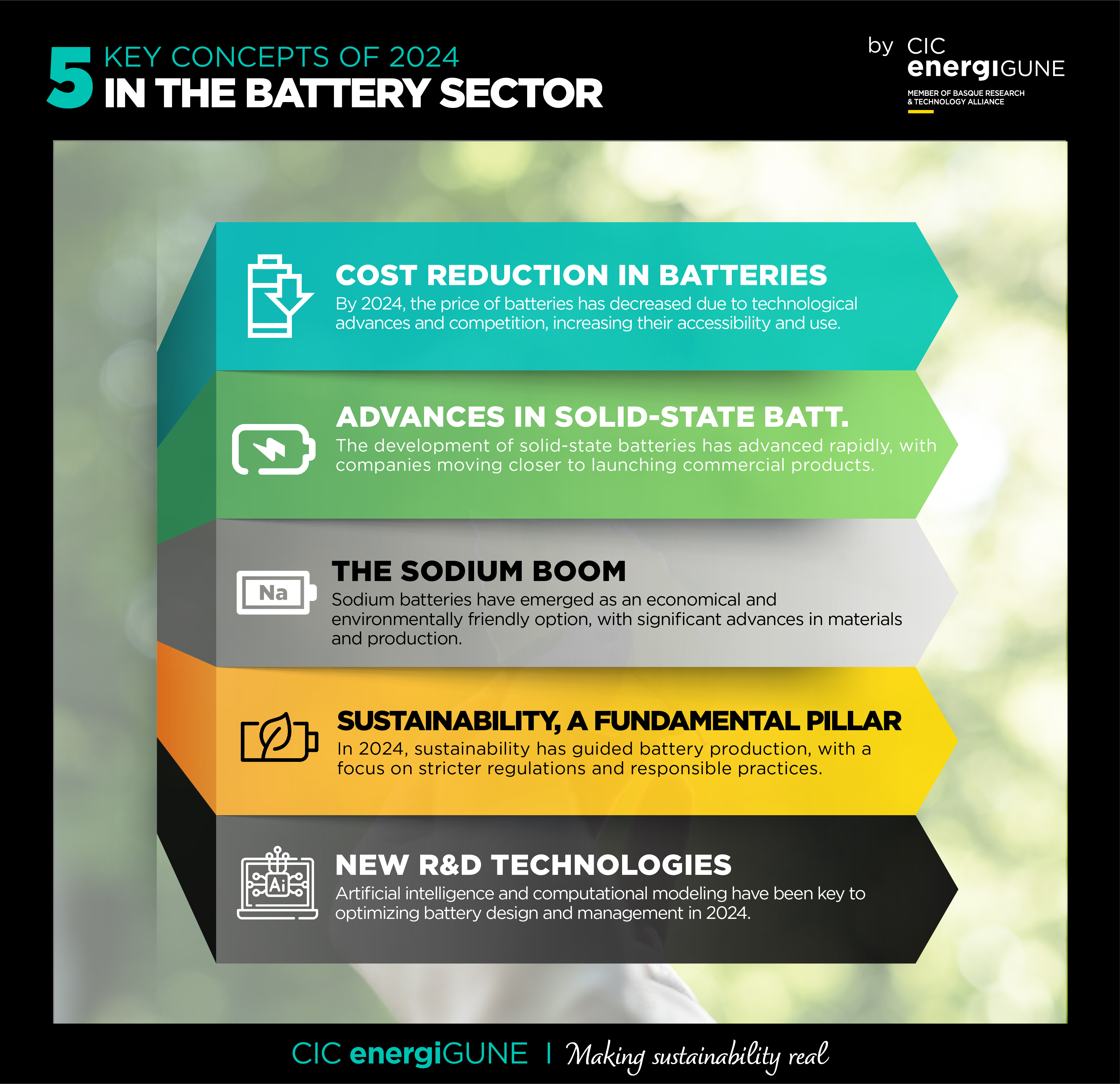Cost reduction and increased market entry
So far this year, the price of batteries has seen a significant reduction due to a combination of technological, economic and market factors. This is leading to more and more solutions and applications that employ batteries being seen in the market, as prices start to become more accessible (as is the case, little by little, with electric vehicles).
This decline in costs has been driven mainly by technological innovations that have enabled the use of alternative and cheaper materials. The industry has moved towards the use of more abundant and sustainable materials, such as lithium iron phosphate (LFP) for example. In addition, production processes continue to improve step by step, enabling economies of scale with faster and more efficient battery production.
In addition to all this, there is another key factor that explains this reduction, namely the ever-increasing market competition, which has intensified price reductions by large battery manufacturers as a commercial strategy.
Advances in the development of solid-state batteries
In this first part of the year 2024, the field of solid-state batteries has continued to advance and develop, achieving greater and greater maturity. Above all, this is due to the efforts that large companies specializing in this technology are putting into accelerating the launch of their first commercial solutions, which is causing some vehicle manufacturing companies to accelerate their plans for the mass use of this technology in their automobiles.
In addition, the entry of approaches and developments such as the use of lithium metal anodes has also been crucial, offering higher energy density. Gradually, more and more advances are being made focusing on the stabilization of these anodes, allowing for longer life and better charging and discharging efficiency. In addition, more efficient and scalable production processes have been developed, reducing costs and improving quality.









